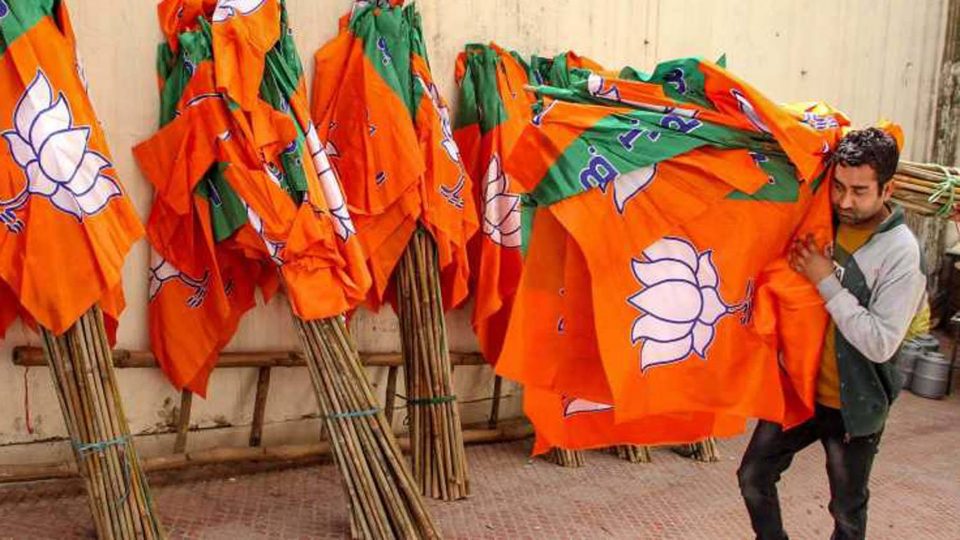
V-day is D-day for Goa; is it BJP or Congress this time?
Goa, battered by COVID, needs a strong government to turn it around; BJP and Congress appear to have an upper hand

The high-octane elections in Uttar Pradesh and Punjab are grabbing a lion’s share of the headlines, but the election in Goa is equally hard-fought. The State goes to polls on Valentine’s day (Monday, February 14), to decide on who gets to form the government next— the BJP, which has been ruling the State for 10 years, chief opposition Congress, new entrants AAP and TMC, or the regional parties.
What makes the election process in the tiny State action-filled is its history of horse-trading, pre- and post-poll defections, thin margins and fractured mandates. The 2017 election had all these elements, plus a surprise finale.
According to political observers, the anti-incumbency is rather high in Goa this time round. The State depends to a large extent on tourism and mining. While tourism has been dealt a mighty blow by the pandemic, mining has been facing environmental challenges.
Also read: Jittered by anti-incumbency, BJP plays Hindu-Muslim card to retain ‘Devbhoomi’
The next government has its task cut out. It needs to turn around the State’s economy, and work around environmental issues to develop Goa’s mining industry and thus boost revenues and employment. For such affirmative action, the new State government needs political stability; how Goans vote tomorrow holds the key to that.
BJP: Parrikar will be missed
The BJP has been ruling Goa since 2012, under three Chief Ministers — Manohar Parrikar (two stints), Laxmikant Parsekar and Pramod Sawant. After anti-incumbency, the BJP’s biggest drawback in this Assembly election is perhaps the absence of Parrikar, who passed away in 2019. He was the party’s biggest leader in the State, who not only created a strong base for it in there, but also tailored its electoral victories.
It may be recalled that in the 2017 election, it was the Congress that won the most seats. But the BJP stake the claim, presented its elected leaders first before the Governor, and formed the government. At the insistence of an alliance party, Parrikar was made the CM. The former Defence Minister had had his share of controversies, but where Goa was concerned, his hold was unquestionable.
This time, the BJP lacks a strong leader even as its battles anti-incumbency. COVID has left the State battered in terms of healthcare as well as economy, and there is considerable anger due to that. There have been a number of defections and intra-party rivalries that have left the BJP weakened. Parsekar, a former CM, and Parrikar’s son Utpal have opted to contest as independent candidates.
Also read: UP phase II polls: Will Muslims, Dalits unite to choose the next govt?
To counter these challenges, the party, which is contesting all the 40 seats in the Assembly for the first time, has resorted to Hindutva and Nehru-blaming. Last week, Prime Minister Narendra Modi said former Prime Minister Jawaharlal Nehru refrained from sending the Army to liberate Goa from Portuguese rule for 15 years because he wished to protect his global ‘peace-loving image’. The Congress had to point out that Portugal was backed by the UN and NATO, and India, perforce, had to handle the situation diplomatically.
Congress: ‘Correcting’ 2017 is critical
The Congress lost Goa despite winning the poll in 2017, and is desperate to make it up this time. However, defections continue to prove its biggest problem. In the 2017 poll, 17 of its MLAs had won the elections; of these, 15 have left the party over five years.
Senior leader P Chidambaram, given charge of the Congress poll campaign this time round, has been pushing the cause. However, 80% of its candidates are new faces, and how the votes will go remains a guess. An even bigger guess is how true the candidates will stay to their party once results are out. The Congress has gone to the extent of asking all the candidates take an oath at a temple, church or mosque, as the case may be, not to defect.
The Congress has been pushing the economic agenda in Goa, criticising the BJP government for its alleged failures. The State government’s handling of the pandemic, and its inability to establish legal, sustainable mining have been its key points of attack. It has also promised to pump up tourism in the State if it comes to power. The party has allied with the Goa Forward Party, and may go for more alliances once the results are out, on March 10.
AAP, TMC, others: Which way will the wind blow?
While the TMC and AAP made enthusiastic starts, their campaigning whittled down over the weeks. The Shiv Sena, which has been trying to expand its footprint beyond Maharashtra, has also stepped up its efforts in Goa.
Under Arvind Kejriwal, the AAP, after winning Delhi thrice and growing its footprint in Punjab, has widened its national ambitions. Apart from promising freebies, the party has asked Goans to give it ‘one chance’ to prove itself, the tagline being ‘Ek Chance Kejriwal’. The party has named Amit Palekar its CM candidate.
The TMC, while battling intra-party rivalries in Bengal, has made an ambitious foray into Goa. Mamata Banerjee’s nephew and party general secretary Abhishek Banerjee has campaigned in the State. The party has allied with the Maharashtrawadi Gomantak Party (MGP), an established regional party led by the Dhavalikar brothers, Sudin and Deepak.
The regional parties — such as the Goa Forward Party, Maharashtrawadi Gomantak Party, Goa Praja Party, and Revolutionary Goans Party — will likely gain prominence post results, if the bigger parties are left trying to stitch together a majority. While they have run campaigns promising jobs and improved living conditions, it’s no secret that theirs is most a stance of wait-and-watch.


